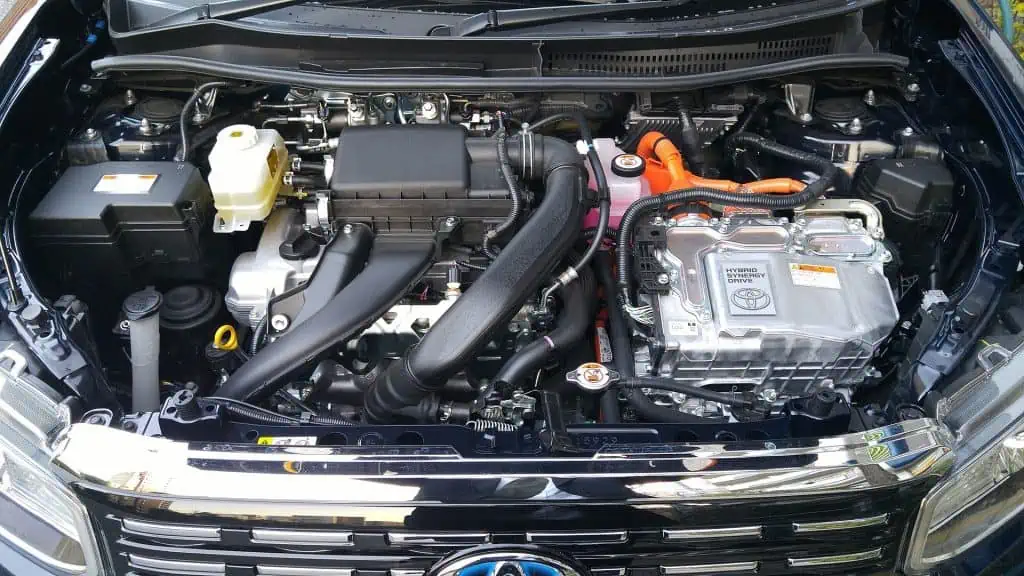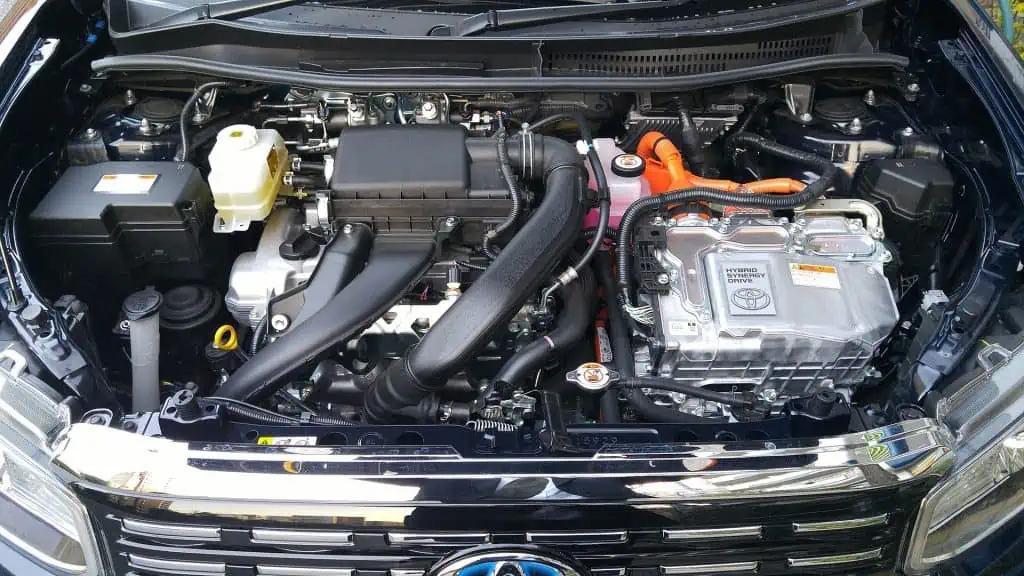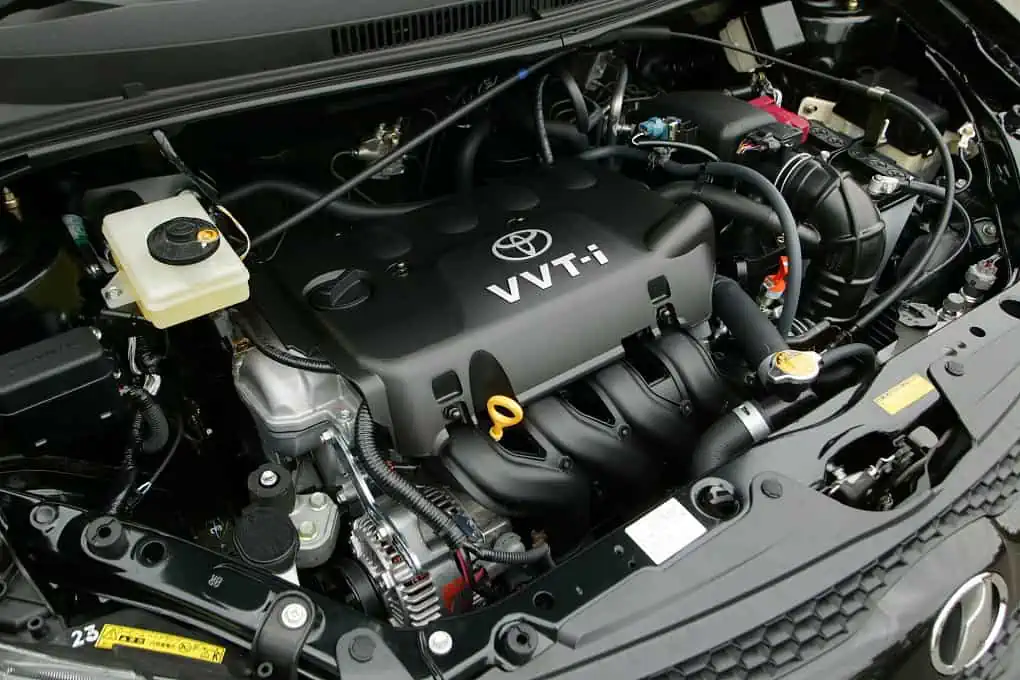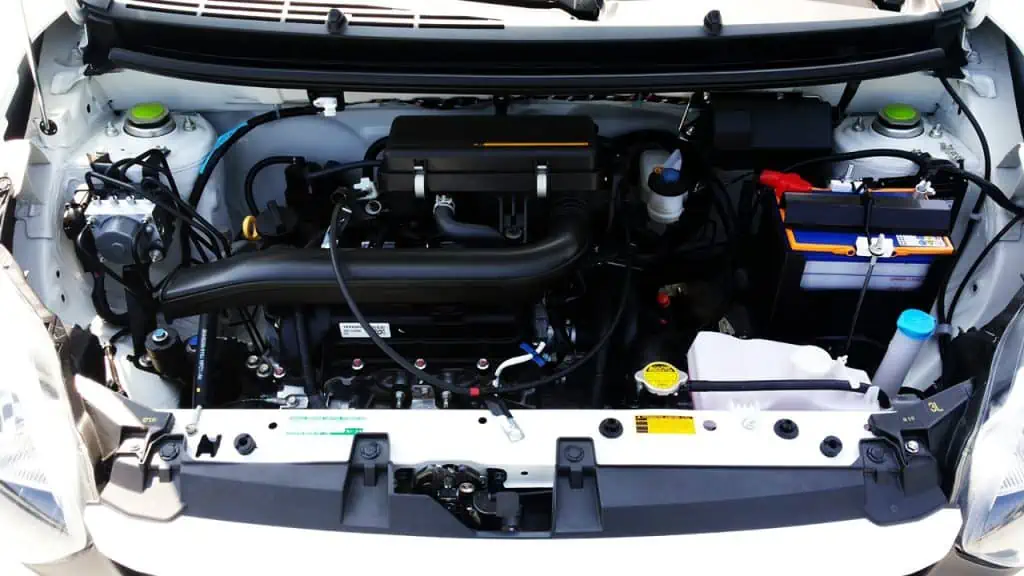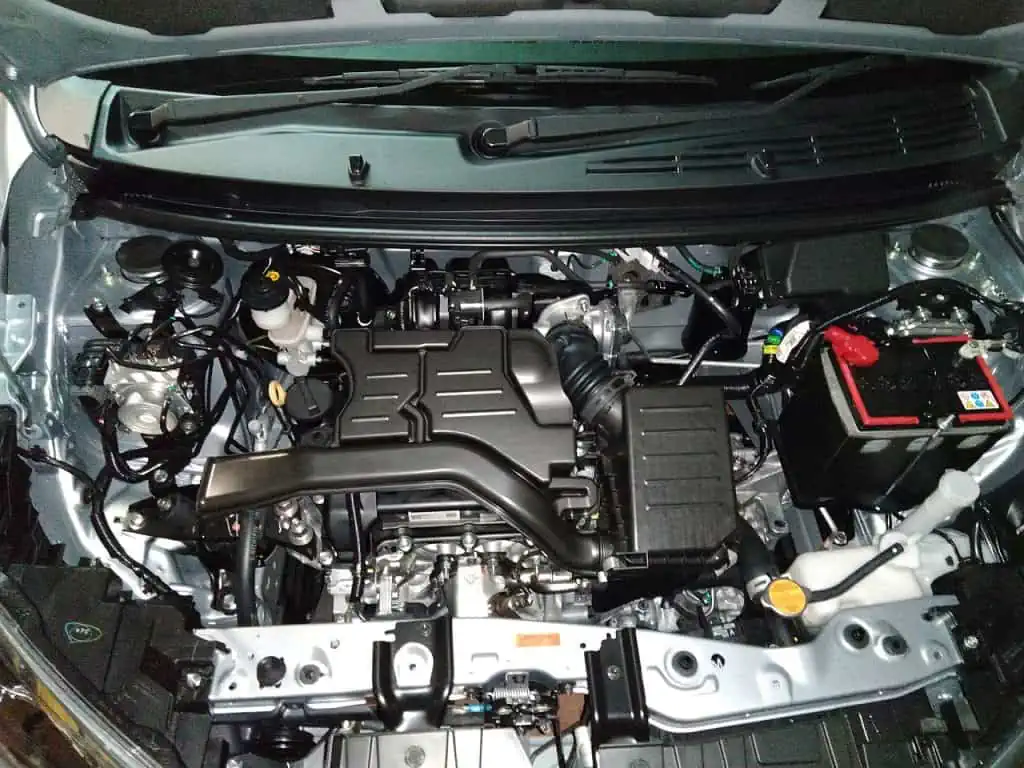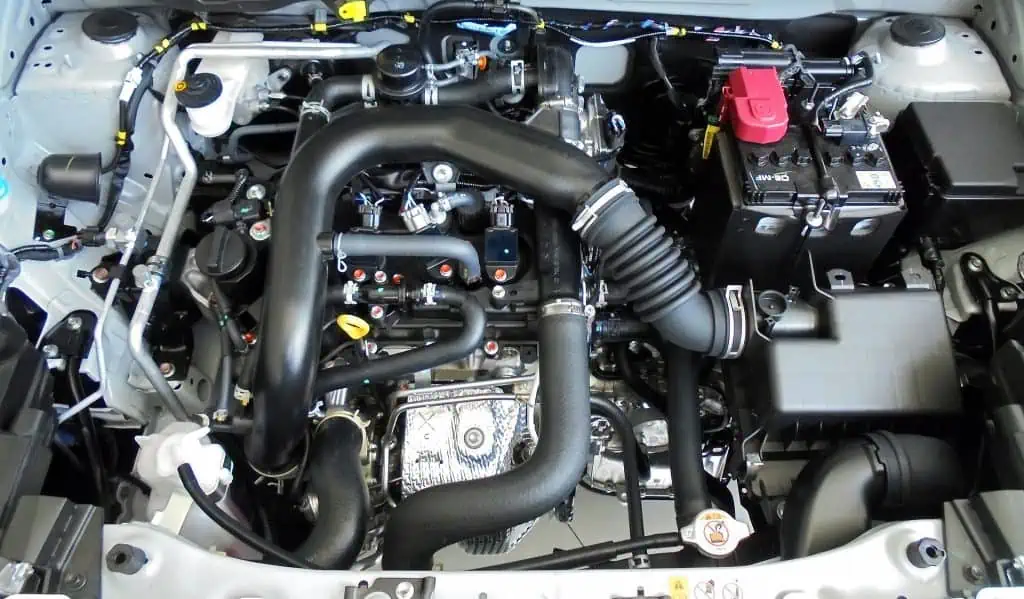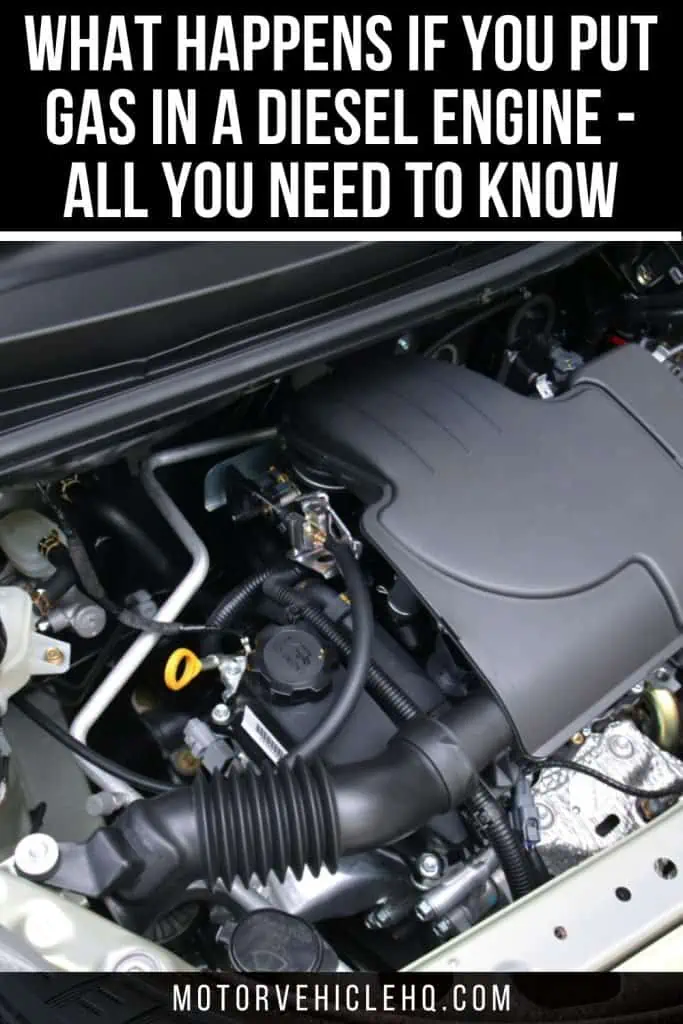One of the simplest—and, in my opinion, the most enjoyable—things you can do in life is fill up your automobile with gas. Grab the pump, insert your credit card, ram the nozzle into your car, and press the pump button to begin pumping.
Up until that awful “Oh No!” the moment when you realize you grabbed the wrong pump, it’s not that simple to goof up. What happens then if you fuel a diesel engine?
So, isn’t this a situation to be in? The vast majority of vehicles on the planet are still powered by either gasoline or diesel, even if we are moving toward electrification and fuel cells.
As a result, this issue occurs much more frequently than anyone would like to acknowledge. Might the fuel combinations in question work together? No, not really.
But what precisely transpires as a result of this mishap? What else can we do to address the issue? Fortunately, the question of what happens if you put gas in a diesel engine has a rather simple answer.
So you’ll have to move quickly. Be calm and hold off on starting your car! Not until you can decide what to do next, which is something we hope to assist you with.
What Differences Exist Between Diesel and Gasoline?
Why is this such a big issue in the first place, before we examine what happens if you put gas in a diesel engine? It shouldn’t be an issue to combine the two fuels if they both come from the same crude oil that was extracted from the earth, right?
That is accurate in a technical sense because diesel and gasoline have the same parent. They have, nonetheless, undergone many refinements to emit distinctive qualities.
A typical car engine by CEFICEFI / CC BY-SA 4.0. The remaining two components, ignition and compression, are where the main differences between gasoline and diesel engines may be discovered. Here is where our problems begin when we examine what happens to a diesel engine when you put gas in it. If either gasoline is used in the wrong engine, it may cause several problems, all of which will be extremely expensive to fix if the problem is not fixed soon away.
- Compared to gasoline, it has a thicker consistency and a more viscous combination.
- Diesel weighs one pound more per gallon than gasoline and is, therefore, heavier (or denser) than gasoline.
- Unlike gasoline, it does not evaporate at higher temperatures.
- Gasoline doesn’t have any lubricating properties, while diesel does.
- Compared to gasoline, it can self-ignite at lower temperatures.
- Spark plugs are necessary for gasoline engines to combust, but not for diesel engines.
- Compared to gasoline engines, diesel engines have a substantially higher compression ratio.
The major distinction between gasoline and diesel engines is found in the last two elements, which deal with ignition and compression. Now when we look at what happens when you put gas in a diesel engine, here is where our troubles start.
In essence, using either gasoline in the wrong engine might result in a variety of issues, all of which will be exorbitantly expensive to resolve if the issue is not resolved right away.
Diesel engines cannot run on gasoline, and gasoline engines cannot run on diesel. Diesel is significantly too dense and thick to fit through the fuel lines and fuel pump system of a gas vehicle.
On the other hand, a diesel engine cannot handle the explosion that is produced when gasoline is ignited. Using either fuel in an engine made for the other has disastrous effects in either case.
What About the Distinctions Between a Gasoline Engine and a Diesel Engine?
In keeping with our prior premise, let’s take a technical look at what happens when you put gas in a diesel engine. What then distinguishes the concepts of compression and ignition in gasoline and diesel engines?
The same principle underlies both diesel and gasoline engines, which is the burning of fuel to produce power and move your car.
Nonetheless, there are significant variations in how that combustion occurs. We need to know more about what happens when you put gas in a diesel engine, thus this is crucial:
Since gasoline engines burn fuel that enters the engine, they are referred to as internal combustion engines or ICEs. The spark plugs ignite the gasoline as it rushes into the cylinders to combine with the air.
The crankshaft rotates as a result of the controlled explosion that drives the pistons downward. The energy needed to move your car is produced here.
Diesel engines, on the other hand, are categorized as compression ignition engines, or CIEs, even though they are comparable. The main distinction is that compression is used.
The piston compresses the air after it has been pulled into the combustion chamber. Glow plugs add more heat to this compressed and already hot air (not spark plugs). After that, diesel is ignited after being injected with extremely hot air.
The engine is the heartbeat of a car by CEFICEFI / CC BY-SA 4.0. Both gasoline and diesel engines are incompatible with one another. Diesel is much too thick and dense to fit through a gas vehicle’s fuel lines and fuel pump system. On the other hand, the explosion that is caused when gasoline is ignited cannot be handled by a diesel engine. In any scenario, using either fuel in an engine designed for the other has fatal results.
In simple terms, diesel is combustible and gasoline is flammable. While diesel burns when it is compressed with extremely hot air, gasoline needs a spark to ignite.
The remainder of the car’s energy generation procedure is comparable. The motor will sustain the majority of the damage since we’ll soon see what occurs when you put gas in a diesel engine.
What Happens If You Put Gas In a Diesel Engine?
What happens if you put gas in a diesel engine is the question that now needs to be answered. The distinctions between these two fuel combinations are now clear to us.
That shouldn’t be a problem if you have a keen eye and noticed the issue before starting your car. In a moment, we’ll delve deeper into that aspect of the situation. What happens if you’re fully unaware of it right now?
You haven’t noticed that you’re pumping the incorrect gas and are content to maintain your composure and carry on driving as if nothing unexpected has happened.
What would happen in this situation? Therefore, let’s take a look at some of the results of fueling a diesel engine and continuing to tow.
It’s time to pay attention, whether you’re already involved in this issue directly, is preparing for a potential encounter, or are simply curious:
Results 1: The Car Will Not Crank Over Since There Is No Ignition
The likelihood that a diesel engine won’t start is the first, and possibly most obvious, the effect of adding gasoline to one. Alternately, it might initially struggle but eventually fail. We must examine the chemical composition of gasoline to understand the very straightforward explanation for this.
Petrol, as it is known outside of the United States of America, is chemically modified to prevent spontaneous ignition. Without the proper circumstances, it won’t ignite at all, or it won’t ignite as easily. This spark plug charge explosion is timed to be present.
But gasoline simply won’t ignite in a diesel engine with glow plugs. Your vehicle will start even if there are some leftover diesel traces in the gasoline. But, the harm you’ve done here is big enough to require expensive repairs.
Results 2: The Exhaust System Will Be Producing Black Plumes of Smoke
More on alchemy: we need to discuss “flashpoint,” or the temperature at which a compound will ignite. The flashpoint for diesel fuel ranges from 126 to 205 °F (or 52 to 96 °C). The flashpoint of a gasoline mixture is around 45 °F (or 43 °C).
Contrary to what you might believe, gasoline is not simpler to ignite as a result of this. We also need to consider “preignition,” or an early ignition brought on by leftover heat. Fuels must also be created with a specified “autoignition” temperature in mind to prevent this from happening.
A car won’t start if the engine fails by Tennen-Gas / CC BY-SA 3.0. Internal combustion engines, or ICEs, are the term used to describe gasoline engines since fuel is burned inside the engine. As the gasoline rushes into the cylinders to mix with the air, the spark plugs ignite it. The controlled explosion that moves the pistons downward causes the crankshaft to turn. It is where the energy that propels your car is created.
This makes gasoline’s autoignition temperature, which is roughly 536 °F (or 280 °C), substantially higher. In contrast, diesel has a temperature of 410 °F (or 210 °C). All things considered, we may claim that gasoline will struggle to ignite within a diesel engine.
This is so that the high temperatures required to ignite the gasoline can’t be produced by a diesel engine. There will be a great deal of surplus and unburned fuel left behind, even though it might eventually ignite.
As a result, soot is created, which causes thick black smoke plumes to emanate from your exhaust.
Results 3: No Lubrication Will Take Place Within the Engine
How diesel and gasoline operate inside your engine is another example of how their chemical compositions differ. Diesel, as we previously knew, has some lubricating qualities, making it somewhat comparable to engine oil. But, the gasoline version is designed more like a solvent.
A diesel engine is built to have diesel flowing through it, thus it naturally has these lubricating capabilities. Given that the engine is fueled to the brim, you can only imagine what would happen without it.
First and foremost, a significant portion of the diesel engine will lack any lubrication. The engine will soon have fuel contamination. The engine’s numerous internal working parts would grind, rub, and come into touch without lubrication. Only irreparable engine damage results from this.
Results 4: The Fuel System Will Experience Severe Damage
Do you recall that we said diesel is thicker than gasoline? This comes back to get us since boosting a diesel engine with gasoline damages the fuel system. Diesel that is more viscous and thick is fed into the engine through components that are tuned for diesel, not gasoline.
The latter fuel mixture is substantially lighter and thinner. Your diesel engine’s fuel injectors, fuel pump, fuel lines, and fuel filter will experience severe wear if gasoline is present instead of diesel. They will soon begin to fail one by one, necessitating replacement.
Results 5: A Permanent Damage Will Be Caused to the Engine and Its Internals
Whether it is a diesel or gasoline engine, it has many moving parts. The parts that provide reciprocating motion are among those that are directly exposed to combustion.
The upward and downward rotations that convert explosions into movement are referred to as reciprocating.
The pistons, connecting rods, and wrist pins are some of these components. Gas can eventually ignite within a diesel engine, even though it doesn’t do so readily, as we previously suggested.
However, the compression of diesel is more (relatively) gentle than the combustion of gasoline, which is far more strong.
A Toyota 1KR FE engine by Tennen-Gas / CC BY-SA 3.0. Despite being similar to gasoline engines, diesel engines are classified as compression ignition engines or CIEs. The usage of compression is the primary distinction. After the air has been drawn into the combustion chamber, the piston compresses it. Instead of spark plugs, glow plugs increase the heat in this compressed and already heated air. Then, after being injected with extremely hot air, the diesel is ignited.
As a result, diesel engines aren’t designed to withstand the forces of gasoline detonation. These additional shockwaves have the potential to break or harm the aforementioned reciprocating parts. The remainder of the engine will be useless when paired with everything else.
What Steps Should You Take If You Put Gas In a Diesel Engine?
Anyone occasionally experiences a minor accident. So far, more individuals than we’d like to acknowledge have experienced what occurs when you put gas in a diesel engine.
Recognizing these errors and taking swift action to correct them is the most crucial action to take. If you’re lucky, while you’re still at the pump, you’d snap back and notice that you’re pumping in the incorrect fuel.
If that’s the case, there’s a chance you can still save your engine. Seldom does gasoline injection cause a diesel-powered vehicle to suffer severe harm. as long as you recognize the error and adhere to the instructions provided.
The results of running a diesel engine on gas are never good. But if you stay vigilant and take quick action, you shouldn’t suffer any consequences.
Step 1: Resist the Want to Start Your Car
Injecting gasoline into a diesel-powered car is not the cause of the adverse effects we previously harassed you about.
Yet, the root of unhappiness is unquestionably starting your car and allowing the gasoline to ignite (or attempt to ignite).
Don’t start your diesel vehicle if you realized you have added gasoline to it. It can be damaged just by attempting to start it.
Don’t even try to start the car, then proceed to the nearby mechanic’s, which is a block away.
Call a tow truck instead, and don’t turn on the engine until all the gas has been pumped out. Unfortunately, most people discover a problem after starting the engine.
If this describes you, shut off your engine once more right away. You’ve at least reduced the damage’s scope at this point.
Step 2: Avoid Delay and Go to a Mechanic
We cannot stress this enough: by “head,” we meant with a tow truck. Go right away to a nearby mechanic, the sooner the better. If you leave the gasoline in there for a while, the remainder of the system will become contaminated.
Once you’ve arrived at the mechanic, they can start to drain and flush any gasoline from the system.
Some people would advise flushing the gasoline at home to save a few pennies. We don’t advise doing this unless you have the required tools, know-how, and experience.
The engine of the 2014 Toyota Wigo G by Areaseven / CC BY-SA 3.0. The first, and possibly most obvious, the consequence of adding gasoline to a diesel engine is the probability that it won’t start. Conversely, it can struggle at first before failing. To see the incredibly simple explanation for this, we first look at the chemical makeup of gasoline. To prevent spontaneous igniting, gasoline, as it is known outside of the United States of America, has undergone chemical modification.
It’s only that every last drop of fuel needs to be completely removed. You need to leave this in the hands of an expert. Diesel’s flashpoint might be lowered by about 64 °F (or 18 °C) with just 1% gasoline contamination.
Step 3: Have Your Car Drained By a Local Technician
The mechanic will now begin emptying every last gasoline molecule from your car. If there is a chance, we’d generally advise taking your damaged vehicle to a professional.
They are familiar with diesel engines and might finish this draining job very quickly.
But, quickness is once more considerably more crucial, thus any workshop will suffice. In any case, the total cost and duration of the drainage-related work shouldn’t be prohibitive.
Be careful to tell your mechanic if you’ve already tried starting your car at the gas station.
They will examine the engine, fuel injectors, and fuel pumps in the interim to look for any lingering damage.
In terms of cost, a drainage job of this nature ought to be between $200 and $500. Depending on how much fuel has entered the system, it will change.
There’s a good reason I mentioned how quickly you responded, and it has to do with how much the repairs will cost.
Gasoline may have penetrated the fuel lines or engine deeply if you delayed prompt drainage. This could result in expenses of between $1,500 and $2,000.
How Is the Gas In a Diesel Engine Problem Fixed?
If you’ve ever wondered what happens if you put gas in a diesel engine, you’ll recall that we talked a lot earlier about draining it. What does a drain include, then?
Apparently, around one in seven people have filled up at the gas station at some point in their lives. Overall, it looks that the procedure of pumping out the gasoline has been very routine. Five main elements determine how much a correction it needs:
- How much gas did you unintentionally add to your diesel vehicle?
- Before you added gasoline, was there at least any diesel remaining in the tank?
- After you loaded the car with gas, did you try to start it, or did you not?
- Have you put enough miles on the car to detect any engine issues?
- Did you continue to drive until your vehicle gave out and stalled?
Regardless of what occurs, they all have basic troubleshooting techniques. Here is how to fix a diesel engine if you’re wondering what happens if you put gas in it.
It might be beneficial for you to comprehend this so that you can appreciate what your mechanic is going through to address this:
The components of a car engine by Shmee150 / CC BY-SA 4.0. Another instance of how the chemical makeup of gasoline and diesel differs from one another is how they behave inside your engine. As we already knew, diesel has some lubricating properties that make it somewhat similar to motor oil. Yet, the gasoline variant is more like a solvent in design. A diesel engine inherently has these lubricating properties because it is designed to have diesel running through it.
A Straightforward Step-By-Step Guide to Resolving What Happens If You Put Gas In a Diesel Engine
Dropping the tank would probably be the first step. In other words, remove the fuel tank from your vehicle. The damage will most likely be contained inside the tank if you haven’t started the engine yet.
After it has been taken out, the mechanics can begin draining the tank. With older cars, draining the tank by itself usually frequently resolves the problem. Modern automobiles, however, require more thorough emptying due to their superior fuel injection technology.
The next element to consider is the gasoline pump. Have your mechanic friend check this out to see whether it needs to be replaced. The gasoline pump might still function if you act quickly and haven’t yet tried to start your vehicle. Even so, you might think about finding a substitute for serenity.
The fuel lines must then be taken apart and drained. They generally resist wear and tear from gasoline contamination pretty well. But just to be sure, they should be thoroughly cleaned and flushed.
The majority of specialists will advise you to replace the gasoline filter following a misfuelling occurrence. The contamination would spread even if only a very small amount of gasoline got stuck there. Clean out the gasoline filter reservoir as well while you’re at it.
You’ll need to inspect the fuel rails and fuel injectors if the engine hasn’t yet detected any gasoline infiltration. It would be simple to clean the rails.
Yet, you’ll also need to have these replaced if the damage is too serious. If the damage to the diesel injectors is relatively minor, you should consider having them repaired. If not, only a replacement will do.
Information About Diesel In Gasoline Cars That You Should Know
Unintentionally filling up a gasoline-powered vehicle with diesel fuel happens more frequently than one may imagine.
Diesel nozzles are intentionally made to be incompatible with gasoline fillers, and diesel pumps are frequently marked with green to distinguish them from gasoline fillers.
The health and functionality of a gasoline-powered vehicle can suffer greatly from diesel fuel contamination.
Diesel is frequently utilized in heavy-duty vehicles, while gasoline is frequently used in light-duty trucks, SUVs, and sedans.
The physical characteristics of gasoline and diesel differ, with gasoline being thinner and more flammable than diesel.
2021 Toyota Raize Turbo Sport engine by オーバードライブ83 / CC BY-SA 4.0. You might still be able to save your engine if you put gas in a diesel engine. Rarely does gasoline injection affect a diesel-powered car. as long as you’re aware of the mistake and follow the directions given. Running a diesel engine on gas never yields positive results. But if you remain watchful and act quickly, you shouldn’t have any negative effects.
Diesel engines employ compression to ignite the fuel, whereas gasoline engines need spark plugs.
Injectors and fuel filters can become clogged when diesel is added to a gasoline tank, resulting in a seized engine.
Starting the car after adding diesel to a tank of gasoline is not advised and may make the repair more difficult.
Tanks should be quickly drained and replenished with gasoline if diesel is inadvertently added to one.
If diesel fuel leaks into the fuel line or engine, repair expenses may easily reach the $1,500–$2,000 range, and draining the tank might cost between $200 and $500.
The Conclusion
The outcomes are less than ideal whether it is gas in a diesel automobile or diesel in a gas car. Positively, it’s much more difficult to confuse them now.
For both gasoline and diesel, the majority of gas stations employ a variety of nozzle types. Diesel pumps have larger nozzles than gasoline pumps. As a result, a diesel pump nozzle might not pass through a gasoline car’s filler port.
Sadly, the nozzle on a gasoline pump is so little that your diesel car may easily fill up with it. When you wonder what would happen if you put gas in a diesel engine, this is where the problem is.
All in all, our only advice is to drive cautiously the next time you pull up next to the pump. Pay close attention to the color of the pump’s handle and the pump itself.
Diesel pumps are normally green while gasoline pumps are typically black in the US. Act quickly if you find yourself in a situation where the gasoline has already started to dribble in.
Don’t start your car, and get the fuel drained from it in a shop. If not, getting everything mended and up and running again will cost a pretty penny. It’s a genuine error, but if you don’t fix it right now, it might be fatal.

A Toyota 1KR FE engine by Tennen-Gas / CC BY-SA 3.0

Jim Wicks is the founder of MotorVehicleHQ. With over two decades of experience in the automotive industry and a degree in Automotive Technology, Jim is a certified car expert who has worked in various roles ranging from a mechanic, car dealership manager, to a racing car driver. He has owned more than 20 cars over the past 15 years. Ask him about any vehicle you see on the road and he can tell you the make, model and year. He loves the aesthetics of all things cars, and keeps his vehicles in pristine condition.
In his free time, Jim enjoys getting his hands dirty under the hood of a classic car or taking long drives along the country roads. His favorite car? A 1967 Shelby GT500, a true classic that, according to Jim, “represents the pure essence of American muscle.”
